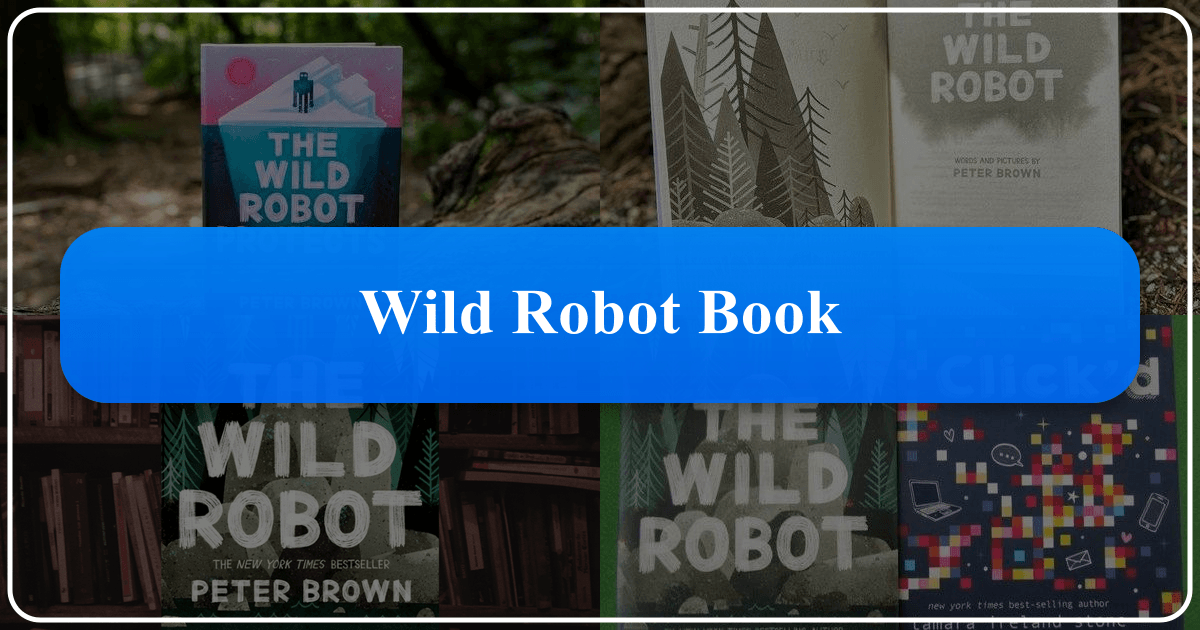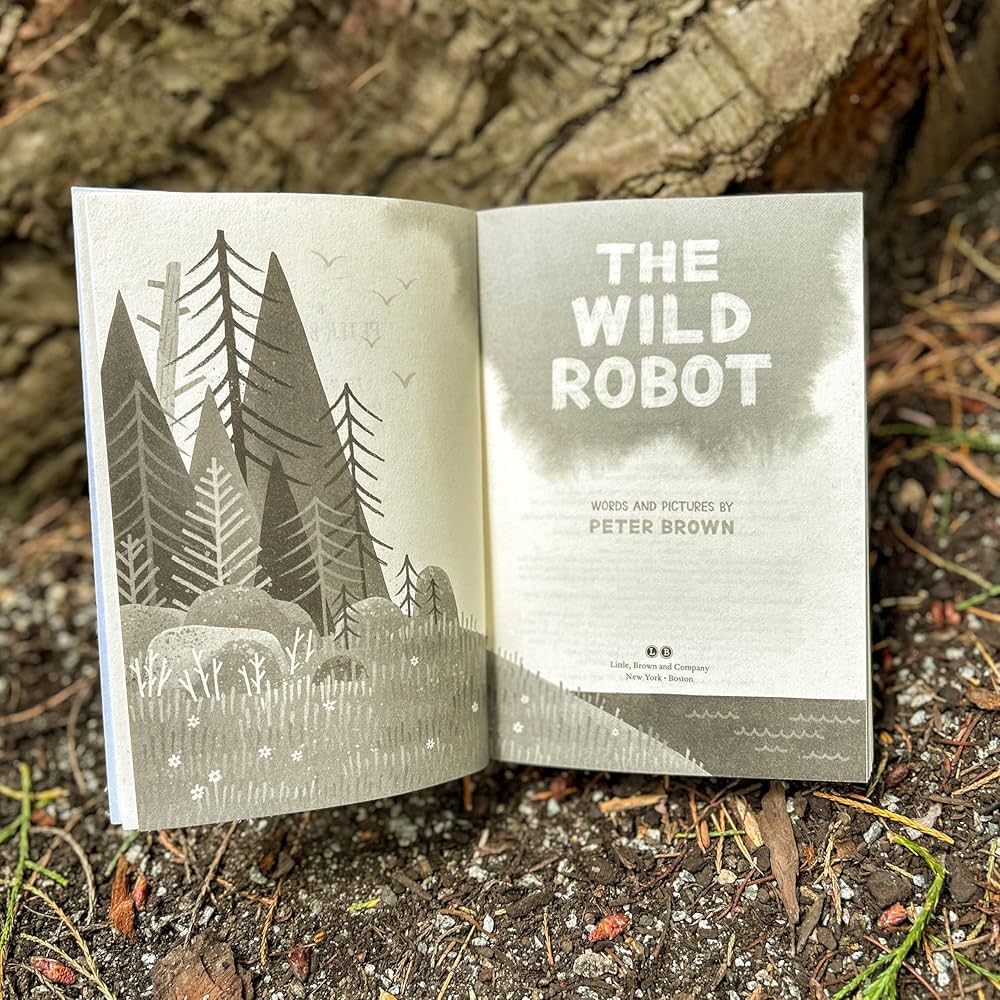The Wild Robot: A Deep Dive into Peter Brown's Award-Winning Novel

Peter Brown’s The Wild Robot has captivated readers young and old with its compelling narrative of Roz, a robot struggling to survive in the wild. This article explores the book’s themes, its impact on readers, and its place within the broader literary landscape, examining it through the lenses of book genres, authorial style, educational value, library resources, and cultural impact.
1. Books: Genre, Reception, and Impact
The Wild Robot is primarily categorized as children’s literature, specifically within the subgenres of middle-grade fiction and animal fantasy. However, its themes of survival, adaptation, and the complex relationship between technology and nature resonate with a much wider audience, including adults. The book’s success is evident in its numerous accolades, including becoming a #1 New York Times bestseller and receiving starred reviews from prominent publications like Booklist, Kirkus Reviews, and School Library Journal. This widespread critical acclaim and commercial success cemented its status as a modern children’s classic. The illustrations, also by Peter Brown, enhance the reading experience and contribute to the book’s broad appeal. Its popularity is further evidenced by its numerous translations and adaptations into other media. The book’s success also reflects a growing interest in stories exploring environmental themes and the ethical considerations of advanced technologies. It’s a testament to the power of imaginative storytelling to address complex issues in an accessible and engaging way.
Bestsellers and Awards

The book’s impressive sales figures solidify its place among bestsellers in children’s literature, particularly within categories like children’s robot science fiction and children’s action and adventure. The awards it has received highlight its artistic and literary merit, signifying its contribution to children’s literature. The awards garnered by The Wild Robot showcase its high-quality writing and artistic merit, demonstrating its ability to engage and captivate audiences.
2. Authors: Peter Brown’s Creative Journey
Peter Brown, the author and illustrator of The Wild Robot, is a renowned figure in children’s literature, celebrated for his earlier picture books like Children Make Terrible Pets and The Curious Garden. His distinct artistic style, characterized by vibrant colors and detailed illustrations, brings Roz and the island’s animal inhabitants to life. Brown’s background in illustration shines through in the novel, complementing the text and enhancing the immersive quality of the story. His creative process, often involving extensive research and personal experiences, is likely reflected in the accuracy and emotional depth of the novel’s depiction of the natural world. Brown has earned various accolades throughout his career, including a Caldecott Honor for Creepy Carrots! and several E.B. White Read Aloud Awards, demonstrating his ability to connect with both critics and young readers.

Writing Style and Inspirations
Brown’s writing style in The Wild Robot is characterized by clear, concise prose that makes the complex scientific concepts accessible to young readers. The narrative, told from Roz’s perspective, offers a unique viewpoint that avoids anthropomorphism while allowing readers to connect emotionally with the robot’s journey. Brown’s inspirations for the story are likely drawn from both his interest in robotics and his deep appreciation for the natural world. The blending of these two seemingly disparate elements is a key factor in the novel’s uniqueness and appeal.

3. Reading and Learning: Educational Value and Life Lessons
The Wild Robot is more than just an entertaining story; it serves as a valuable educational tool, introducing children to concepts of survival, adaptation, and the delicate balance of ecosystems. The book encourages critical thinking about technology’s role in nature and sparks conversations about environmental responsibility. Reading the book allows young readers to witness the process of adaptation and resilience firsthand, as Roz learns to navigate a challenging environment. The story’s emotional depth subtly introduces ideas about empathy and connection, as Roz’s relationships with the island’s animals grow. The absence of explicit emotions in Roz’s character allows for readers to create their own interpretation of emotions in her actions, fostering critical thinking about empathy.
Summaries and Life Lessons
The plot of The Wild Robot revolves around Roz’s journey of survival on a remote island, highlighting how she learns to adapt to her environment, communicate with wildlife, and face unexpected challenges. The story is full of valuable life lessons about resilience, problem-solving, the importance of connection, and the power of learning from others. These are portrayed in a compelling narrative that resonates with both young and adult readers, creating a memorable learning experience that goes beyond simple factual information. The ending, although somewhat bittersweet, underscores the complexities of life and the acceptance of unforeseen circumstances, inspiring readers to accept what is and to develop perseverance to achieve their own goals.
4. Libraries: Accessibility and Preservation
The Wild Robot has found a comfortable home in both public and school libraries worldwide, making it readily accessible to a broad range of readers. Its enduring popularity ensures its presence in various library collections, promoting literacy and providing access to high-quality children’s literature. Digital libraries offer convenient access to the text, while physical copies ensure the book’s long-term preservation for future generations.
Digital and Physical Libraries
The book’s availability in various formats (e-books, audiobooks, and physical copies) contributes to its widespread accessibility. This means the book can be easily accessed in different library collections, ensuring it reaches a diverse and vast readership. Its inclusion in both physical and digital library systems ensures its availability for present and future generations, emphasizing its cultural importance.
5. Cultural Impact: Adaptations and Literary Influence
The Wild Robot has transcended its status as a children’s book to become a part of popular culture. Its adaptation into a DreamWorks film has broadened its reach, introducing the story to a new audience. The film’s success demonstrates the enduring appeal of the novel’s themes and characters. The book’s story and themes have influenced subsequent works, including sequels and picture book adaptations, reflecting its influence on the literary world. Its popularity has also inspired discussions and analysis in academic and popular media, further highlighting its impact.
Adaptations and Awards
The creation of a movie adaptation based on the book demonstrates the broader cultural interest in the story. This also showcases the book’s storytelling potential and its capability to translate into other media. The numerous reviews and articles analyzing the book’s themes and artistic merit demonstrate its influence and impact on various literary and cultural landscapes. The book’s ongoing presence in discussions and academic analyses underlines its contribution to contemporary children’s literature.
In conclusion, The Wild Robot is more than just a children’s book; it’s a significant work of literature with a far-reaching cultural impact. Its success stems from a compelling narrative, engaging illustrations, thought-provoking themes, and readily accessible formats. The book’s lasting popularity ensures its continued relevance and contribution to the world of children’s literature for years to come.